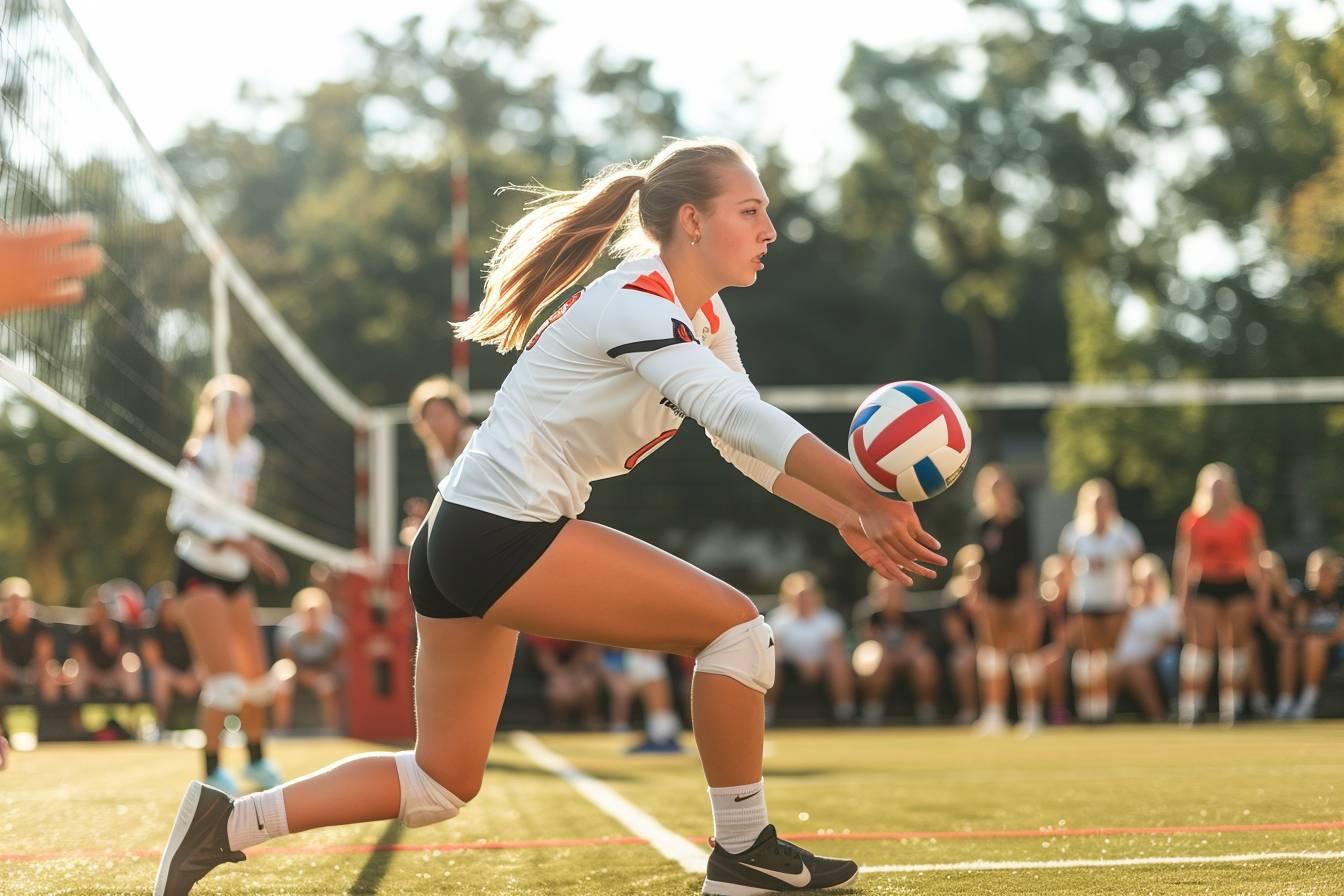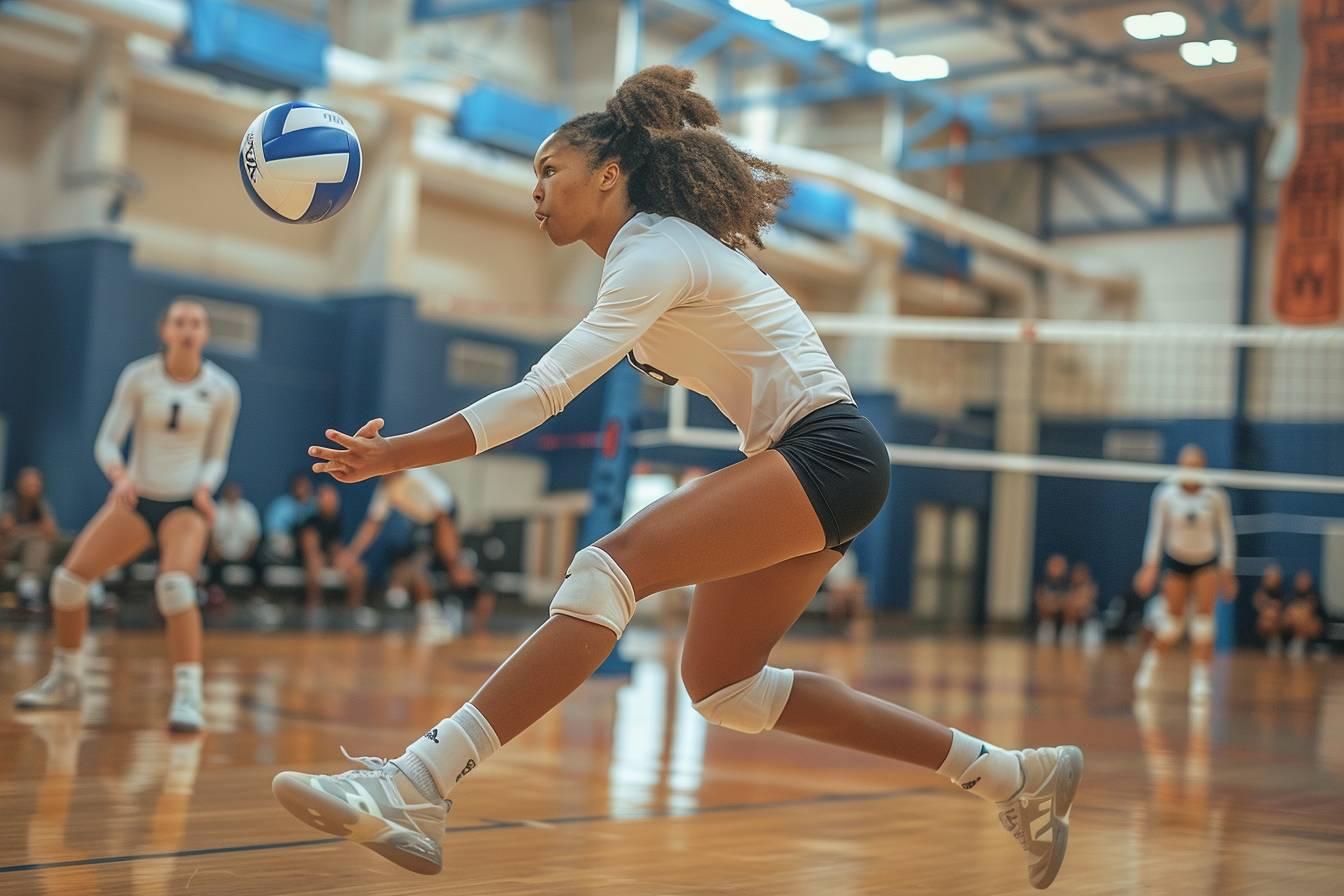🤸 To sum up :
Understanding side outs in volleyball is crucial for players and coaches. This article explores their evolution and importance in modern gameplay :
- Historical context : Originally, only serving teams could score points
- Modern interpretation : Now refers to change of serve between teams
- Strategies : Perfecting serve reception, enhancing communication, and implementing quick offensive plays
- Training : Specific drills and statistical analysis for improved performance
Volleyball enthusiasts often encounter the term “side out” during matches, but its meaning has evolved over time. As passionate sports professionals, we recognize the importance of understanding key volleyball terminology. Let’s dive into the intricacies of side outs, their historical context, and their significance in modern volleyball. 🏐
Historical context and evolution of side out
The concept of side out in volleyball has a rich history dating back to the 1920s. It originated on the sun-soaked beaches of Santa Monica, California, where the traditional side-out scoring system was born. Under this system, only the serving team could score points, leading to matches that could stretch on for hours. 🕰️
Initially, a side out referred to a situation where the serving team committed a rule violation. This resulted in the ball being handed over to the opposing team without any points being awarded. This scoring method created a unique dynamic in volleyball matches, as teams had to maintain possession of the serve to accumulate points.
As volleyball enthusiasts with a keen eye for technical precision, we appreciate how the sport has evolved over time. The shift from side-out scoring to rally scoring in modern volleyball has had a profound impact on the game’s pace and strategy. This change occurred to make matches shorter and more intense, increasing the importance of each side out.
Modern interpretation and mechanics of a side out
In today’s volleyball, the term “side out” has taken on a slightly different meaning. It now simply refers to the change of serve from one team to another. Under the current rally scoring system, both the serving and receiving teams can score points on every play. This modification has significantly altered the dynamics of the game. 🔄
The mechanics of a successful side out involve a series of well-executed skills :
- Serve reception : The receiving team must effectively handle the incoming serve.
- Setting : A precise set is crucial for creating attacking opportunities.
- Attacking : The team must successfully attack to win the rally and gain possession of the serve.
As a fitness coach with a passion for volleyball, I can attest to the importance of these skills. Effective side outs require strong passing, setting, and attacking abilities. Teams that excel in these areas often have higher side-out percentages, a key performance metric tracked by coaches and analysts.

Strategies for effective side outs and their psychological impact
Developing strategies for successful side outs is crucial for any volleyball team aiming for success. As competitive athletes, we understand the importance of optimizing every aspect of our game. Here are some key strategies to improve side-out efficiency :
- Perfecting serve reception formations
- Enhancing on-court communication
- Implementing quick offensive plays
- Developing versatile attacking options
The psychological impact of side outs cannot be overstated. A team’s ability to consistently execute side outs can significantly boost morale and maintain momentum throughout a match. Conversely, failing to side out can lead to a loss of confidence and a shift in momentum towards the opposing team. 🧠💪
To illustrate the importance of side-out efficiency, let’s examine a comparison of side-out percentages and their impact on match outcomes :
| Side-out Percentage | Match Win Probability | Team Morale Impact |
|---|---|---|
| 70% and above | High | Very Positive |
| 60-69% | Moderate | Positive |
| 50-59% | Low | Neutral |
| Below 50% | Very Low | Negative |
Training drills and statistical analysis for improved side outs
As a fitness coach with a keen eye for technical precision, I recommend incorporating specific training drills to enhance side-out performance. These drills should focus on :
- Serve reception accuracy
- Setter-attacker coordination
- Quick decision-making under pressure
- Simulated game scenarios
One effective drill is the “Side-out Challenge,” where teams must successfully side out within three attempts to earn points. This drill simulates match pressure and encourages players to maintain focus and execute efficiently. 🏋️♂️
Statistical analysis plays a crucial role in evaluating and improving side-out performance. Coaches and analysts track various metrics, including :
- Overall side-out percentage
- Side-out efficiency by rotation
- First-ball kill percentage
- Setter distribution effectiveness
By analyzing these statistics, teams can identify strengths and weaknesses in their side-out game and tailor their training accordingly. For instance, if a team struggles with side outs from a particular rotation, they can focus on developing specific plays or adjusting their lineup to address this weakness.
In beach volleyball, where there are only two players per team, side outs take on even greater importance. The reduced number of players on the court means that each individual’s performance has a more significant impact on the team’s success. Beach volleyball players must be particularly adept at all aspects of the side-out process, from serve reception to attacking.
As we continue to evolve as volleyball professionals, it’s crucial to stay updated on the latest techniques and strategies for improving side-out efficiency. By focusing on this fundamental aspect of the game, teams can significantly enhance their overall performance and increase their chances of success on the court. 🏆



